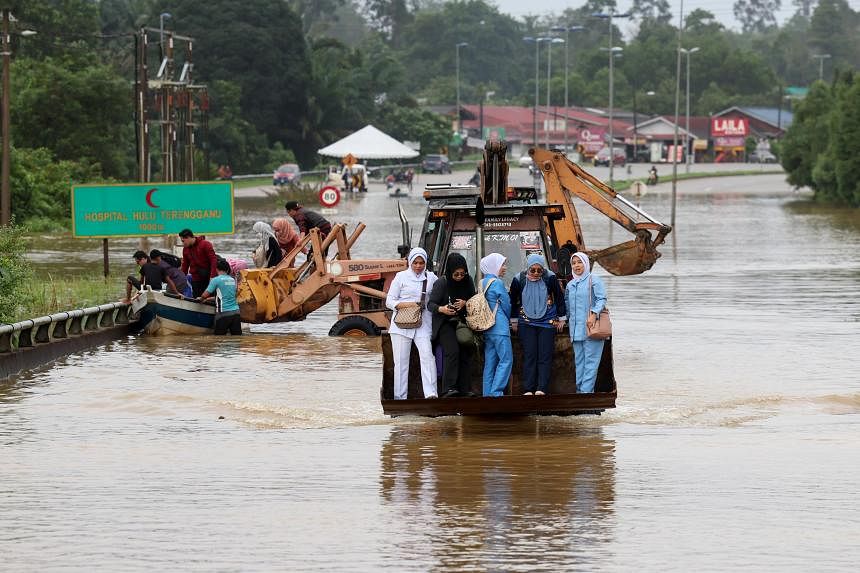KUALA LUMPUR - Torrential rain in the last few days from the annual monsoon season inundated six Malaysian states on Dec 27, forcing nearly 27,000 people to seek shelter at relief centres, with the east coast states the worst hit.
Even Kelantan Menteri Besar Nassuruddin Daud was not spared, with the water level rising rapidly around his house in Kampung Meranti on the outskirts of state capital Kota Bharu.
“The water level rose quite rapidly... Praise God, this morning I was still able to carry out my official duties by going to the office to lead the executive council meeting,” he said on Facebook on Dec 27. Pictures on his social media account showed knee-deep brown water on the road in his village.
Riverbanks burst due to the fast-rising waters in parts of the six states – Kelantan, Terengganu, Pahang, Johor, Selangor and Sabah.
Kelantan and Terengganu, on Malaysia’s east coast facing the South China Sea, were the worst affected, accounting for more than 95 per cent of evacuees.
A total of 13 rivers in six districts in Terengganu had exceeded the danger level at noon on Dec 26, following continuous rain over the past few days.
Pictures shared on social media accounts showed several main roads in Terengganu were impassable to traffic, with vehicles submerged in water.
In Kelantan, the elevated water levels and strong currents broke a wall at a flood mitigation project at Sungai Golok, causing flooding in nearby Pasir Mas.
According to the Department of Social Welfare, 20,216 people in Kelantan had been evacuated and placed in 66 temporary relief centres, up from 15,145 on Dec 26. In Terengganu, some 6,175 people sought shelter at 63 centres, while 119 people in Pahang were forced to evacuate.
Temporary shelters, comprising mainly public town halls and schools on higher ground, are usually equipped with flood-relief gear, including tents to house families inside the halls, utensils and raw food for mass cooking, and rescue boats.
In Terengganu, volunteers from the Ajil Silaturrahim non-governmental organisation (NGO) swung into action using excavators to move dozens of staff and patients heading to the Hulu Terengganu Hospital onto boats.
Mr Sahnun Hamad, who runs the NGO, told The Straits Times: “The waters have receded a little bit, down to 1.5m, but we are still using excavators and boats to move people.”
A total of 647 policemen and 154 volunteers from the Malaysia Volunteers Corps have been deployed to flood-hit areas, as well as 35 boats, 29 lorries and 56 four-wheel-drive vehicles.
Malaysian Prime Minister Anwar Ibrahim said he will visit Kelantan on Dec 28.
“God willing, I will go to Kelantan tomorrow to personally assess the increasingly worrying situation there,” he said in a social media post on Dec 27.

With Covid-19 cases on the rise in Malaysia, health department officials and medical staff have been deployed to flood evacuation centres to screen for Covid-19 symptoms.
“When a victim wants to register at the centre, ministry officials will conduct an initial examination and investigation,” said Terengganu deputy police chief Wan Rukman Wan Hassan.
“If their condition is not satisfactory, the victim will be referred to the hospital for further screening and treatment,” he was quoted as saying by Bernama news agency.
He reminded parents to prevent their children from playing in flood waters, and advised those travelling during the holiday season to keep electrical appliances on higher ground in case of floods.
According to the meteorological department, the country is deep into the north-east monsoon season, which usually lasts from October to March.


